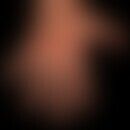Synonym(s)
DefinitionThis section has been translated automatically.
Hyoscyami folium, also known as henbane leaves, refers to the dried leaves (with or without flowering twin spikes and scattered fruits) of Hyoscyamus niger, the black henbane.
Due to the low therapeutic range (strong toxic effect of the tropane alkaloids!), henbane is no longer used today.
HMPC: preparation of a monograph discontinued in 2011
Commission E: monograph in 1988: spasmodic conditions in the gastrointestinal tract; currently, according to current knowledge, no longer used phytotherapeutically!
IngredientsThis section has been translated automatically.
Henbane leaves contain tropane total alkaloids (0.03 to 0.2 %) such as atropine, L-hyoscyamine, apoatropine, L-scopolamine. Further ingredients are choline, traces of essential oils and tanning agents.
You might also be interested in
EffectsThis section has been translated automatically.
As a drug, henbane leaves have the highest scopolamine content and therefore have centrally sedative properties. In addition, they have spasmolytic (especially on the muscles of the gastrointestinal tract) and narcotic effects.
Field of application/useThis section has been translated automatically.
Henbane leaves are used medicinally as an anticholinergic, for colds or spasms in the gastrointestinal tract and are contained in scar ointments.
DosageThis section has been translated automatically.
The average single dose is 0.5g of the hyoscymic powder adjusted according to DAB. Maximum Tges dose is 3.0g.
LiteratureThis section has been translated automatically.
- https://arzneipflanzenlexikon.info/bilsenkraut.php
Montag A (2023) Plants and skin. Springer-Verlag GmbH. S. 395-396




